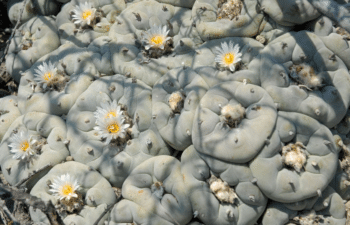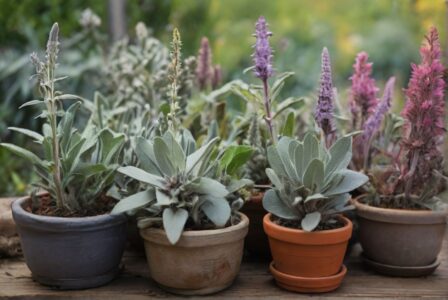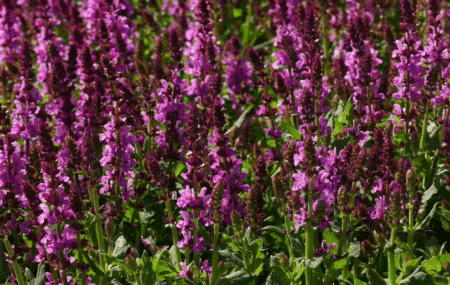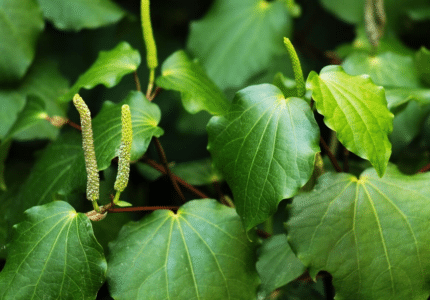- What is Lophophora diffusa?
- The special features of Lophophora diffusa
- Location and habitat of Lophophora diffusa
- Care and cultivation of Lophophora diffusa
- Possible uses of Lophophora diffusa in naturopathy
- Tips for propagating Lophophora diffusa by seed or cuttings
- Conclusion: Discover the diversity of Lopohphora diffusa!
Here you can find our Lophophora diffusa seeds!
Here you can find our Lophophora williamsii seeds!
Here you can find our Lophophora williamsii var. fricii seeds!
Lophophora diffusa, also known as the peyote cactus, is an unusual plant with some special characteristics. It grows mainly in the desert and has adapted to extreme living conditions. The care and cultivation of this plant requires special knowledge, but it can be used in a variety of ways in naturopathy. In this blog article, you will learn everything about Lophophora diffusa - from its habitat to propagation by seed or cuttings. Immerse yourself in the fascinating world of this versatile plant!
1. what is Lophophora diffusa?
Lophophora diffusa, also known as peyote cactus, is a fascinating plant with a long history in natural medicine. The name "Lophophora" comes from the Greek and means "comb-bearing". This name refers to the characteristic comb structure on the surface of the cactus. Lophophora diffusa belongs to the cactus family and is mainly native to the dry desert regions of North America. There it prefers to grow in sandy soils and can adapt to extreme climatic conditions. Its habitat extends from Texas and Mexico to parts of Arizona and New Mexico. Due to its unique characteristics, Lophophora diffusa is also often cultivated as an ornamental plant, both in private gardens and botanical gardens worldwide.
However, it is not only the appearance of this plant that makes it special, but also its potential uses in naturopathy. Lophophora diffusa has been used for medicinal purposes in various cultures for centuries. It contains a variety of active ingredients, including mescaline, alkaloids and various minerals, which can have an anti-inflammatory, pain-relieving or calming effect. This is why this plant is often used in rituals or ceremonies for the purpose of spiritual enlightenment or healing. In addition to its use in naturopathy, Lophophora diffusa can also be propagated, either by seeds or cuttings. It is important to follow certain care instructions to ensure healthy growth. Overall, Lophophora diffusa offers a wide range of possibilities and is of great interest to both plant lovers and users of naturopathy.
2. the special features of Lophophora diffusa
Lophophora diffusa, also known as peyote cactus, is a special plant with unique characteristics. Its striking appearance and fascinating properties make it a popular subject among botanists and naturopaths. Lophophora diffusa is characterized by its compact growth, which usually only reaches a height of 5-10 cm. Its green to blue-green body is covered with numerous small warts, which give it an interesting appearance. But Lophophora diffusa doesn't just have something special to offer on the outside. Its internal qualities are also impressive. One of the most remarkable properties of Lophophora diffusa is its high alkaloid content. These chemical compounds have a psychoactive effect and can produce hallucinogenic effects at certain doses. This makes the peyote cactus an important plant in various traditional cultures, particularly among the indigenous peoples of North America. There it has been used for centuries for ritual purposes and is considered a holy sacrament. Lophophora diffusa also contains other useful ingredients such as beta-carotene, vitamin C and various minerals.
These substances help to strengthen the immune system and promote general well-being. They are also reported to have anti-inflammatory and pain-relieving properties, which explains the use of Lophophora diffusa in naturopathy. Lophophora diffusa thrives best in dry and sunny areas with well-drained soil. It is adapted to extreme climatic conditions and can survive both high temperatures and long periods of drought. In Mexico, the natural habitat of the peyote cactus, it is mainly found in desert and semi-desert areas. To grow Lophophora diffusa successfully, the location should offer similar conditions to its natural habitat. Good drainage is crucial to avoid waterlogging. The plant also needs plenty of sunlight to grow optimally. It is advisable to cultivate it outdoors or in a greenhouse. Overall, Lophophora diffusa offers a variety of uses in both natural medicine and for ethnobotanical purposes. Its unique appearance and special properties make it a fascinating plant that is worth getting to know and researching. If you are interested in botany or alternative healing methods, you should definitely learn more about the diversity of Lopohphora diffusa!
3. location and habitat of Lophophora diffusa
Lophophora diffusa is a special plant that has specific requirements for its location and habitat. It is mainly native to the dry desert regions of northern Mexico. There it prefers to grow on barren soils, usually between rocks or in sandy areas. The habitat of Lophophora diffusa is characterized by extreme temperatures and little rainfall. These conditions have led to the plant adapting optimally to its environment. Thanks to its compact growth with thick stems and small leaves, it can store water well and thus survive longer periods of drought. In addition, its grey-green color protects it from intense sunlight. Lophophora diffusa therefore finds ideal conditions in its natural environment and is perfectly adapted to survival in the desert.
4. care and cultivation of Lophophora diffusa
Many lovers of this fascinating plant dedicate themselves to the care and cultivation of Lophophora diffusa. Some specific measures are required to promote the growth and health of Lophophora diffusa. First of all, it is important to choose a suitable location for the plant. Lophophora diffusa prefers sunny spots with well-drained soil and little moisture. A sandy or gravelly soil is particularly suitable as it allows good drainage and prevents waterlogging. Regular watering is also important during the growth phase, making sure that the soil can dry out slightly between waterings. In the winter months, on the other hand, Lophophora diffusa needs a resting phase and should be watered less. Another important aspect of caring for Lophophora diffusa is fertilization.
As this plant has very few nutrients available in its natural environment, additional fertilization is advisable. However, it is advisable to use organic fertilizers, as chemical fertilizers can damage the sensitive root structure. There are also some special features to consider when growing Lophophora diffusa. As this species is not native to Germany, it must be cultivated either in a greenhouse or as a houseplant. Here it is important to adapt the temperature and light conditions as closely as possible to the natural habitat. Lophophora diffusa requires a temperature of around 20 to 25 degrees Celsius and prefers bright, indirect light. Overall, the care and cultivation of Lophophora diffusa requires some effort and patience, but you will be rewarded with a beautiful plant that is also used in natural medicine. In our next blog article, you can find out more about the various uses of Lophophora diffusa in naturopathy. So stay tuned and discover the many facets of this extraordinary plant!
5. possible uses of Lophophora diffusa in naturopathy
The uses of Lophophora diffusa in naturopathy are many and varied, making this plant an interesting option for people who prefer alternative healing methods. One common use of Lophophora diffusa is for pain relief. The plant's ingredients can help with various types of pain, such as headaches or joint pain. Lophophora diffusa is also often used to treat inflammation, as it has anti-inflammatory properties. Another area in which Lophophora diffusa can be effective is in strengthening the immune system. The plant contains various immunomodulating substances that can support and strengthen the immune system. This can help to ward off infections and increase general well-being. Lophophora diffusa is also used to treat gastrointestinal problems.
The plant's ingredients have a calming and antispasmodic effect on the gastrointestinal tract and can therefore alleviate complaints such as abdominal pain or indigestion. In addition to these specific areas of application, Lophophora diffusa also has a generally positive effect on the body and mind. It is often used as a natural energizer that promotes vitality and stamina. The plant can also have a calming effect and help with stress or sleep disorders. Overall, Lophophora diffusa offers a wide range of possible uses in naturopathy. However, it is important to note that individual needs and circumstances should always be taken into account when using it. In case of doubt, an expert in the field of naturopathy should always be consulted to rule out possible risks or interactions. But with all the positive properties of Lophophora diffusa, nothing stands in the way of natural support for well-being!
6. tips for propagating Lophophora diffusa by seed or cuttings
Lophophora diffusa can be propagated in two different ways: by seed or by cuttings. Both methods have their advantages and disadvantages that need to be considered. If you decide to propagate by seed, you should make sure that the seeds are fresh and of good quality. You can either order them online or buy them from specialized nurseries. To create optimal germination conditions, it is advisable to soak the seeds in lukewarm water for 24 hours before sowing. They can then be sown in special cactus soil. Even watering and sufficient light are important, but not direct sunlight. Germination usually takes several weeks to months, so be patient.
7 Conclusion: Experience the diversity of Lopohphora diffusa!
The Lophophora diffusa cactus, also known as the peyote cactus, is a fascinating plant with a variety of characteristics and benefits. In this blog article, we have already gained an insight into the special features of this plant, explored its location and habitat and provided tips on care and propagation. Now we want to conclude by taking a look at the many uses of Lophophora diffusa in naturopathy. The active ingredients of the peyote cactus have played an important role in various indigenous cultures for centuries. They are often used for medicinal purposes, particularly in relation to their pain-relieving and anti-inflammatory properties. In addition, Lophophora diffusa is also used for spiritual rituals to gain deep insights or expand consciousness. Another interesting area of application is support for mental illnesses such as depression or anxiety disorders.
The psychoactive substances of the peyote cactus can help to dissolve negative thought patterns and promote positive emotional states. In addition to direct medicinal applications, there are also various preparations of Lophophora diffusa, such as teas or tinctures. These can be used to strengthen the immune system or to promote general health. However, it is important to note that the peyote cactus is protected by law in many countries and trade and the collection of wild plants may be illegal. You should therefore inform yourself well and, if in doubt, fall back on legal alternatives. Overall, Lophophora diffusa offers an impressive variety of possibilities both in terms of its biological properties and its potential applications in naturopathy. It is worth exploring this fascinating plant in more detail and discovering its potential.
Note: The information in this article is for informational purposes only and is not intended to replace the advice of a physician or other healthcare professional. Always consult a doctor before using any new herbs or supplements. Furthermore, you should always check whether the cultivation/possession/use/processing of certain plants is permitted in your country. As we only offer ornamental plants in our store, we are allowed to only Provide information and advice on the correct care of plants!
Youtube: Lophophora diffusa in natural habitat
References
- https://de.wikipedia.org/wiki/Lophophora_diffusa
- https://psychonautwiki.org/wiki/Lophophora_diffusa
- https://www.wikiwand.com/en/Lophophora_diffusa
















